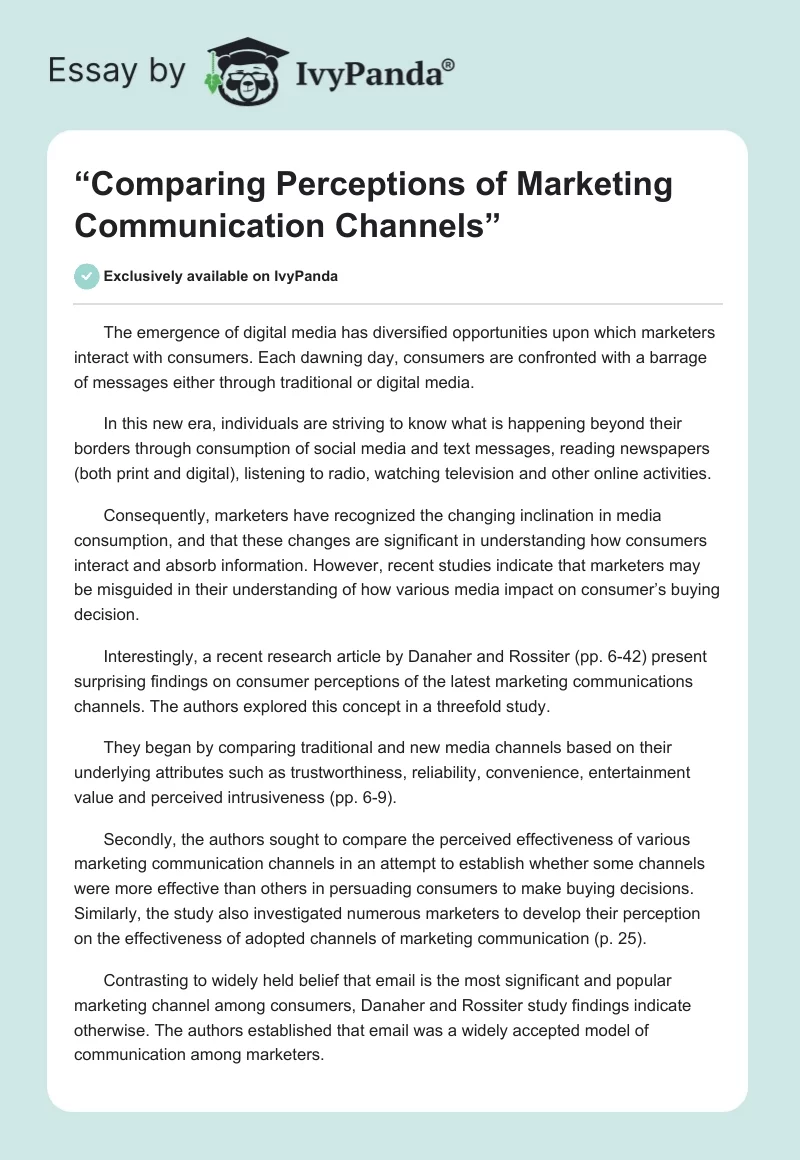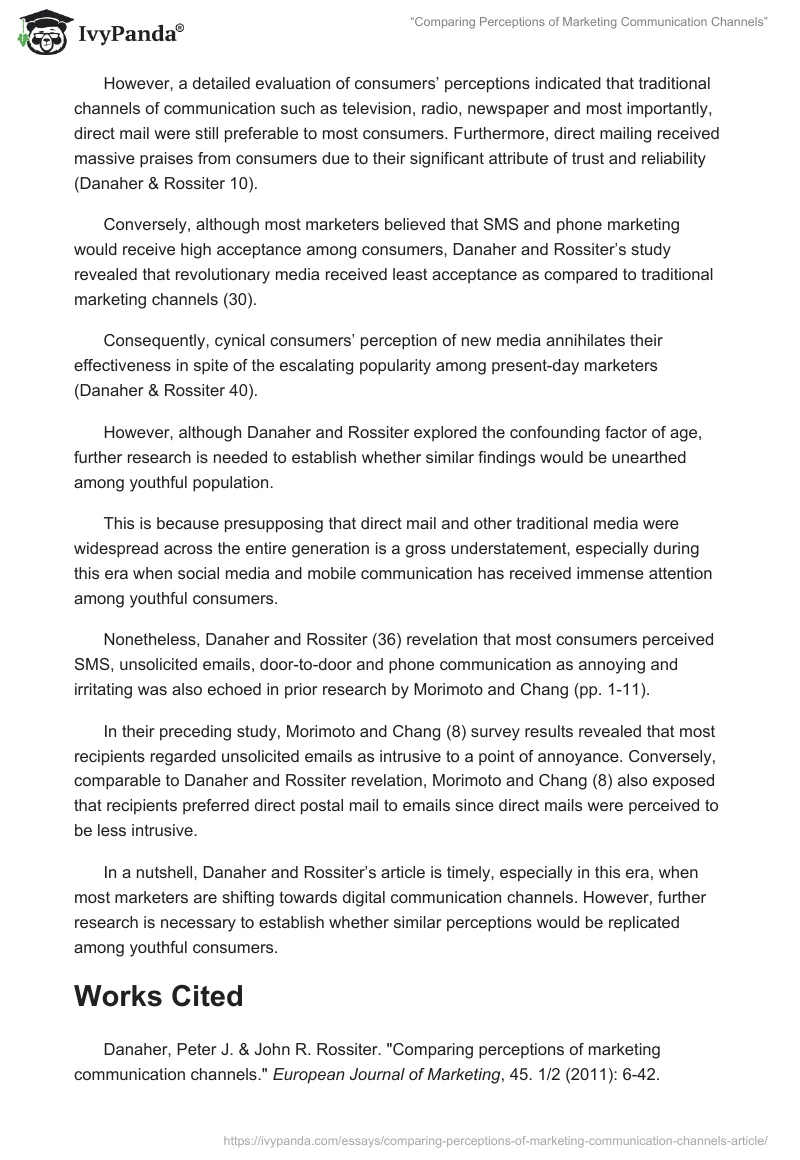The emergence of digital media has diversified opportunities upon which marketers interact with consumers. Each dawning day, consumers are confronted with a barrage of messages either through traditional or digital media.
In this new era, individuals are striving to know what is happening beyond their borders through consumption of social media and text messages, reading newspapers (both print and digital), listening to radio, watching television and other online activities.
Consequently, marketers have recognized the changing inclination in media consumption, and that these changes are significant in understanding how consumers interact and absorb information. However, recent studies indicate that marketers may be misguided in their understanding of how various media impact on consumer’s buying decision.
Interestingly, a recent research article by Danaher and Rossiter (pp. 6-42) present surprising findings on consumer perceptions of the latest marketing communications channels. The authors explored this concept in a threefold study.
They began by comparing traditional and new media channels based on their underlying attributes such as trustworthiness, reliability, convenience, entertainment value and perceived intrusiveness (pp. 6-9).
Secondly, the authors sought to compare the perceived effectiveness of various marketing communication channels in an attempt to establish whether some channels were more effective than others in persuading consumers to make buying decisions. Similarly, the study also investigated numerous marketers to develop their perception on the effectiveness of adopted channels of marketing communication (p. 25).
Contrasting to widely held belief that email is the most significant and popular marketing channel among consumers, Danaher and Rossiter study findings indicate otherwise. The authors established that email was a widely accepted model of communication among marketers.
However, a detailed evaluation of consumers’ perceptions indicated that traditional channels of communication such as television, radio, newspaper and most importantly, direct mail were still preferable to most consumers. Furthermore, direct mailing received massive praises from consumers due to their significant attribute of trust and reliability (Danaher & Rossiter 10).
Conversely, although most marketers believed that SMS and phone marketing would receive high acceptance among consumers, Danaher and Rossiter’s study revealed that revolutionary media received least acceptance as compared to traditional marketing channels (30).
Consequently, cynical consumers’ perception of new media annihilates their effectiveness in spite of the escalating popularity among present-day marketers (Danaher & Rossiter 40).
However, although Danaher and Rossiter explored the confounding factor of age, further research is needed to establish whether similar findings would be unearthed among youthful population.
This is because presupposing that direct mail and other traditional media were widespread across the entire generation is a gross understatement, especially during this era when social media and mobile communication has received immense attention among youthful consumers.
Nonetheless, Danaher and Rossiter (36) revelation that most consumers perceived SMS, unsolicited emails, door-to-door and phone communication as annoying and irritating was also echoed in prior research by Morimoto and Chang (pp. 1-11).
In their preceding study, Morimoto and Chang (8) survey results revealed that most recipients regarded unsolicited emails as intrusive to a point of annoyance. Conversely, comparable to Danaher and Rossiter revelation, Morimoto and Chang (8) also exposed that recipients preferred direct postal mail to emails since direct mails were perceived to be less intrusive.
In a nutshell, Danaher and Rossiter’s article is timely, especially in this era, when most marketers are shifting towards digital communication channels. However, further research is necessary to establish whether similar perceptions would be replicated among youthful consumers.
Works Cited
Danaher, Peter J. & John R. Rossiter. “Comparing perceptions of marketing communication channels.” European Journal of Marketing, 45. 1/2 (2011): 6-42.
Morimoto, Mariko & Susan Chang. “Consumers’ Attitudes toward Unsolicited Commercial E-mail and Postal Direct Mail Marketing Methods: Intrusiveness, Perceived Loss of Control, and Irritation.” Journal of Interactive Advertising 7.1 (2006): 1-11.


